Difference between Cell Splitting and Cell Sectoring
Capacity has been a top priority for those who build cell phone networks because of its growing economic significance and the network's constantly growing user base. Every cell phone system has a limit on how many people it can support before its efficiency or quality suffers.
The volume of traffic in a specific period grows with more users. As a result, congestion inside the system increases with time. The volume of traffic in a specific period grows with more users. As a result, congestion inside the system increases with time. As a result, the channel's ability will keep decreasing, and new strategies will be required to open up additional avenues.
What is Cell Splitting?
An instant fix for capacity and interference reduction is to divide a cell into two or more smaller ones. This process is known as "cell splitting." It is a procedure that creates many cell regions inside a cell or autonomous reception area of a cellular system. Each cell is assigned its base station, and transmitter power and antenna elevation are subsequently decreased.A technique wherein a cellular system's autonomous coverage region or a cell's area is split into two or more cell areas to allow for multiple cells.
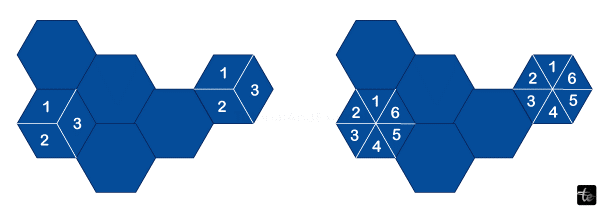
Cell splitting is a mechanism that creates more microcells—that is, cells that are much smaller than normal cells—by dividing the cells in high-traffic regions. Because of this, more base stations would have to be constructed at the site where every additional cell is deployed to function.to get the intended outcome of improved capacity in densely populated regions
more channel bandwidth, improved cellular phone network accessibility and reliability, and more recycling of frequencies are the goals of cell splitting.
Advantages
- significantly expands the channel's communication capability.
- Increases the cellular infrastructure' reliability.
- Raises a variable for the amount of recurrence.
- Boosts the signal-to-noise ratio (SNR).
- Lowers the impact.
Disadvantages
- In this operation, an enormous amount of ground stations must be installed since each cell needs its base stations.
- Handoffs happen often.
- Setting up streams is challenging.
What is Cell Sectoring?
A cellular network may be more capable of handling a growing variety of users by substituting many pointed antennas for the base station's panoramic antenna. Here's one approach. Cell sectoring is a different technique that involves adding extra base stations to cells.A method where a single cell is divided into several wedge-like industries, each with a distinct set of pathways.
In cell sectoring, directed BS antennas partition each cell's distinct radial sections to increase system efficiency and counteract co-channel interference. This is a widespread technique applied to macro-cellular structures. In actuality, a single radio tower located in the centre of the cell network is equipped with many sectored antennas. Then, the next set of transmitters is put in place to encompass the cell's 360-degree region.
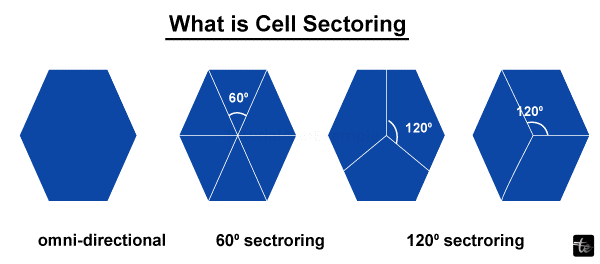
Cell sectoring reduces the number of cells that comprise a particular cluster and also condenses the space between co-channels during the entire procedure. Thus, the technique of decreasing interference from co-channels to increase the cellular system's capacity is known as cell sectoring. To do this, directional antennas are used for every sector housed inside a cell.
Advantages
- By improving the signal-to-interference ratio, sectoring reduces the size of the cluster.
- Minimizes interference without changing the functionality of the system.
- Enhances the flexibility of the channel without requiring a modification to the cell radius.
- Lowers the overall amount of cells in the group, increasing their reuse.
- Channel assignment is more uncomplicated.
Disadvantages
- enable more antennas to be installed in each base station.
- Efficiency falls as sectoring lowers the number of route groupings.
- Unnecessary meddling results in lost traffic.
- In cell sectoring, the frequency of transfers rises as the cell's area of operation shrinks.
Difference Between Cell Splitting And Cell Sectoring
| Cell Splitting | Cell Sectoring |
| A technique wherein a cellular system's autonomous coverage region or a cell's area is separated into several cell areas to fit multiple cells.As a result, there will be more handoffs (base station transfers) throughout each call, increasing the processing load.The co-channel reuse ratio remains constant as the cell diameter decreases.A crowded cell is split up into smaller ones.Because cell splitting enhances the amount of times that pathways are reused, it enhances the immune system's capability.Capacity is increased by adding more channels and unit area by defining new cells with a smaller radius than the original cells and placing these fewer cells, also known as microcells, between the existing partitions.One larger cell is split into two smaller ones.Lowering the transmission power during cell division is necessary to preserve the S/I ratio.The cell's diameter is reduced while maintaining a consistent co-channel reuse ratio D/R to increase throughput.Due to the massive macro-cells devoted to cell division, call progression may be completed efficiently, and the frequency of transfers is reduced. | A technique where one cell is divided into several wedge-like sectors, each with a distinct set of pathways. This function splits channel sets into smaller groups, which decreases the trunking process's efficiency.Even if the co-channel reuse ratio has lowered, the cell diameter remains the same.It entails installing many pointing antennas in place of the base station's omnidirectional antenna.Power is sent in only one intended direction with direct antennas, reducing the quantity of co-channel cells that interact and co-channel disturbance.Cell sectoring is a method that uses directed antennae to reduce co-channel interference and improve system efficiency.There are two sections in the cell: 120o and 60o.The S/I ratio is increased via cell sectoring, which uses directional antennae.Reducing the co-channel recycling ratio D/R while maintaining the cell's fixed radius will increase throughput.Cell sectoring reduces the coverage area of a set of channels while increasing the amount of transfers. |
Cell splitting v\s Cell sectoring
Cell splitting
Cell splitting is the process by which a single cell is split into two or more smaller pieces. It reduces the disruption brought on by many users sharing a single cell.
Using this technique, a mobile phone the system's cell area is separated into many cell areas, each of which includes a base station and transmitter of its own.
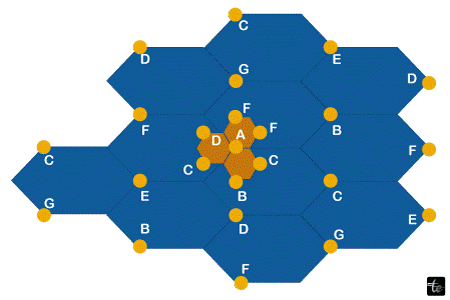
Large user cells can be divided into several tiny cells using this procedure, each smaller than the parent cell.
Therefore, a new base station is required for the new cell to deliver services to its consumers.
Cell division increases the channel's electrical capacity andmakes it simple to operate and manage many contacts at that frequency.
Cell Sectoring
To meet the needs of the more extensive users in the cell, a one-directional antenna is transformed into a multifaceted antenna by this method. Cell sectoring is another method that involves adding extra base stations to cells.
Each cell is divided into radial sectors, each with a directed central station antenna to improve system performance and mitigate co-channel congestion.
This method is applied to systems with several cells. A single microwave tower sits in the middle of the cell, with several sectored stations atop it. Additional antennas are attached to span the cell's circumference.
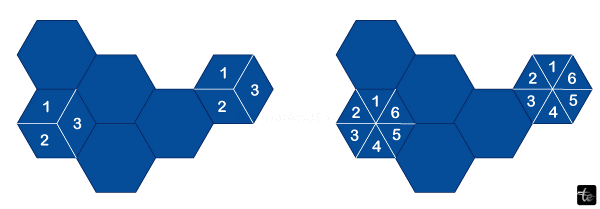
This procedure results in a reduction in the number of cells that make up a particular cluster, and the distance between dividing theco-channel likewise declines.
Cell sectoring, then, is the practice of reducing interference from co-channel to increase the cell phone network's throughput.
In a cell, it has two kinds of sectoring.
1.3 Sectors 120 degree each
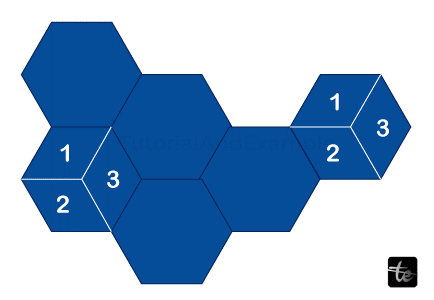
2.6 Sectors 60 degree each
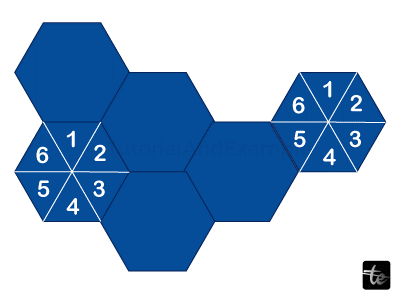
Conclusion
Though they both seek to increase a mobile phone network's channel bandwidth while simultaneously enhancing its reliability, cell splitting and cell sectoring are very different from one another. A greater channel size can be attained by "cell splitting" or dividing a larger cell size into many small cell sections. This increases the amount of reuse of frequencies that can be accomplished. Conversely, cell sectoring reduces the possible disruptions that each cell is exposed to, which mitigates the impacts of co-channel interference. Utilizing directed base stations with the antennas, each cell is divided into radial sectors to achieve this. One feasible method of simulating the effectiveness of an omnidirectional antenna is to install many angled antennas that span the whole circle of view. This method utilizes all of the wavelengths that are accessible. While cell sectoring focuses on directed optimization, enhancing covering in specific instructions, and more effective use of existing frequency ranges, cell splitting aims to increase total network bandwidth and reduce disturbance by separating cells. Both tactics handle the changing needs of mobile communications networks while assisting in the efficient administration and improvement of these networks. Cellular sectoring vs. cellular splitting is determined by the particular requirements and goals of the system's implementation.